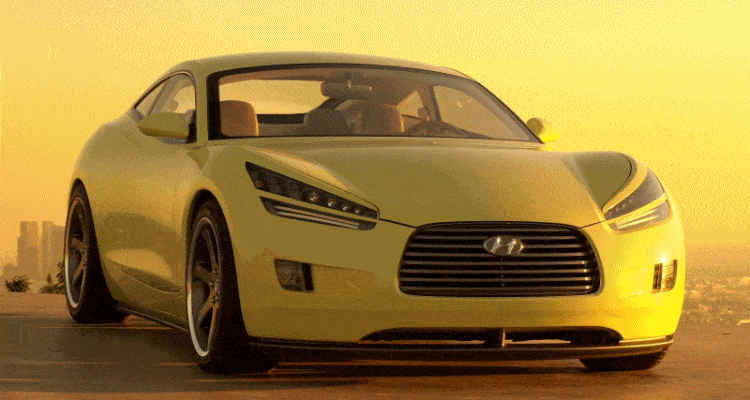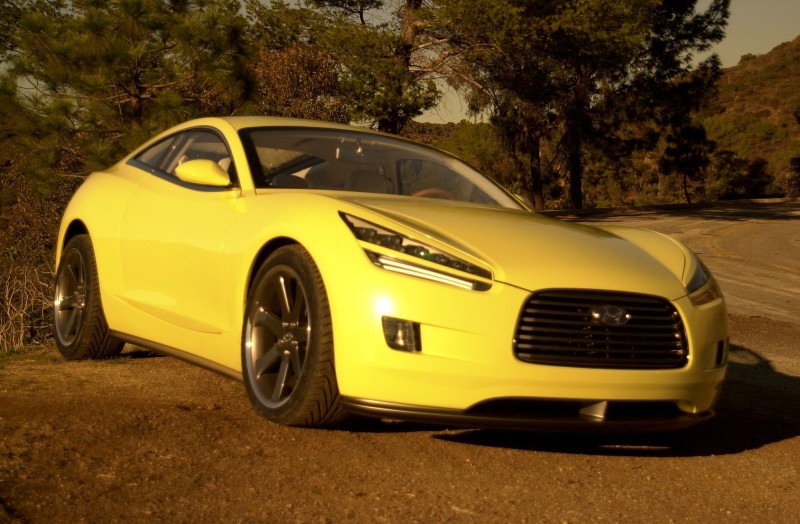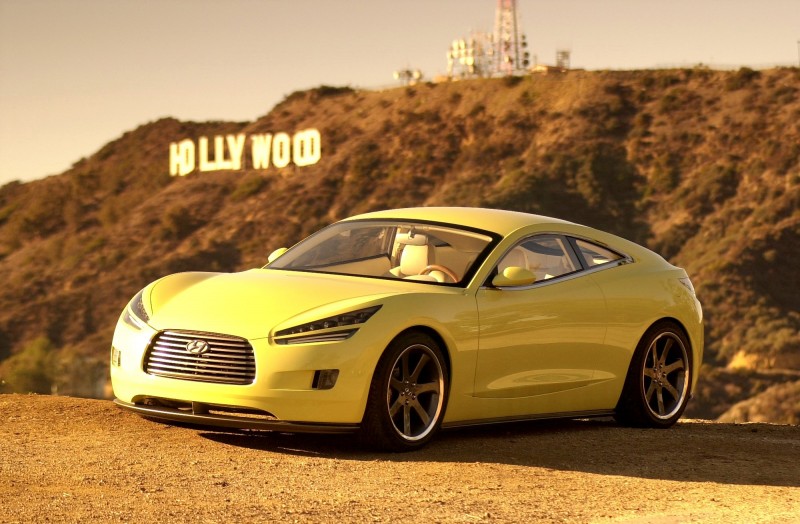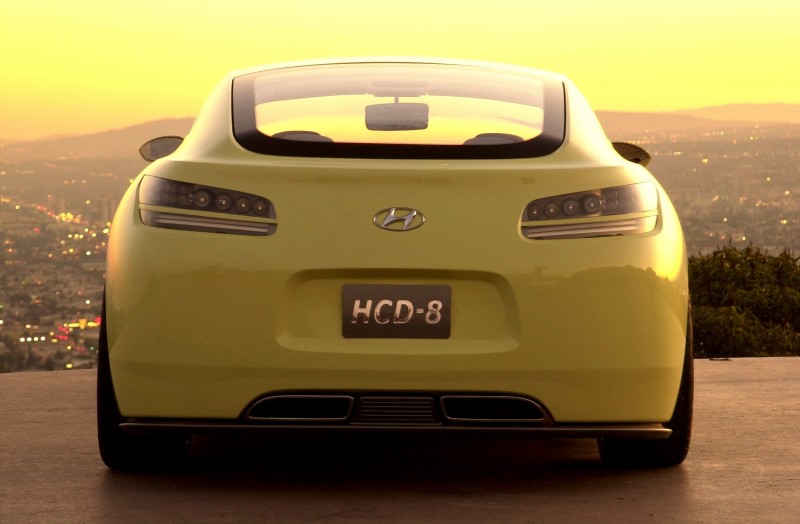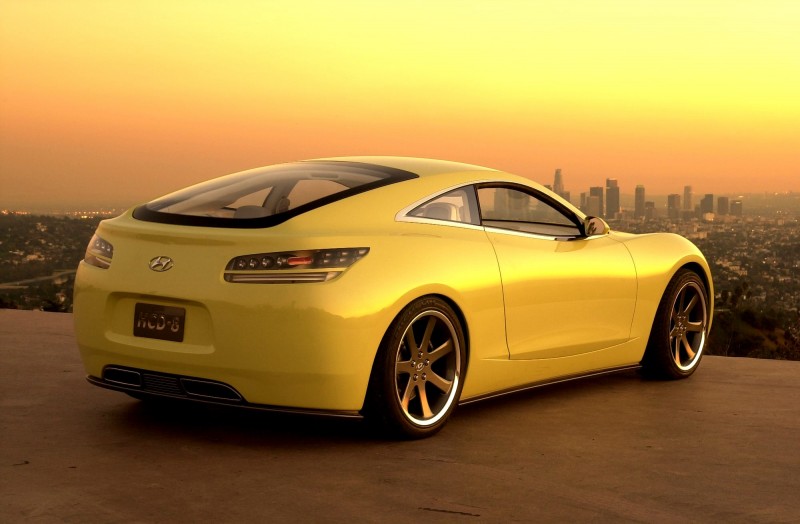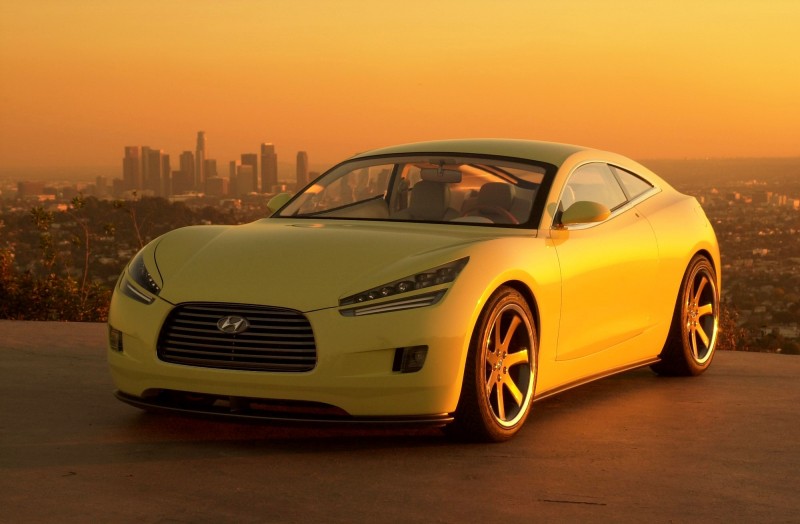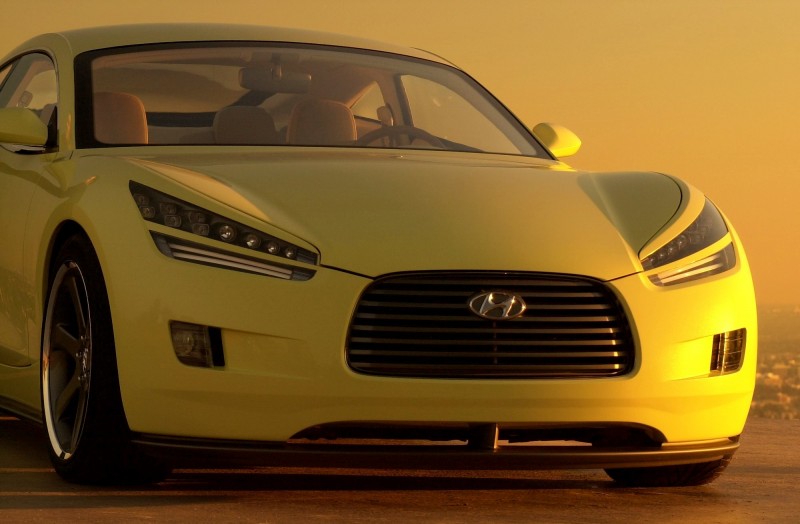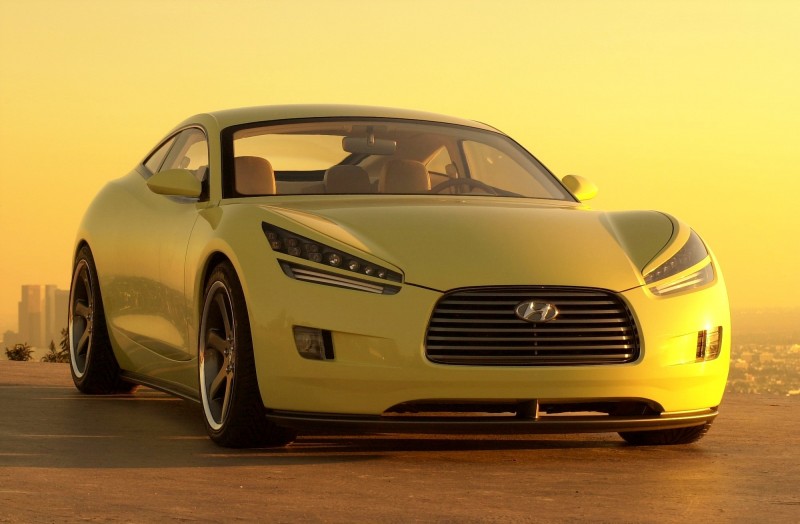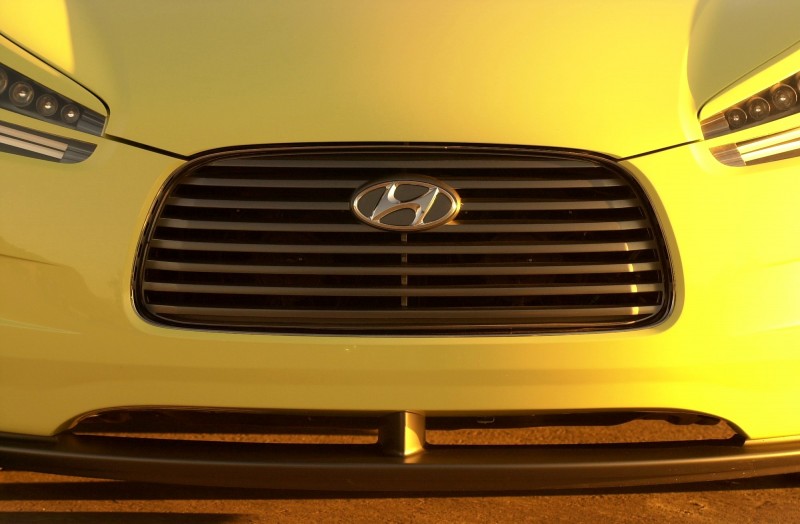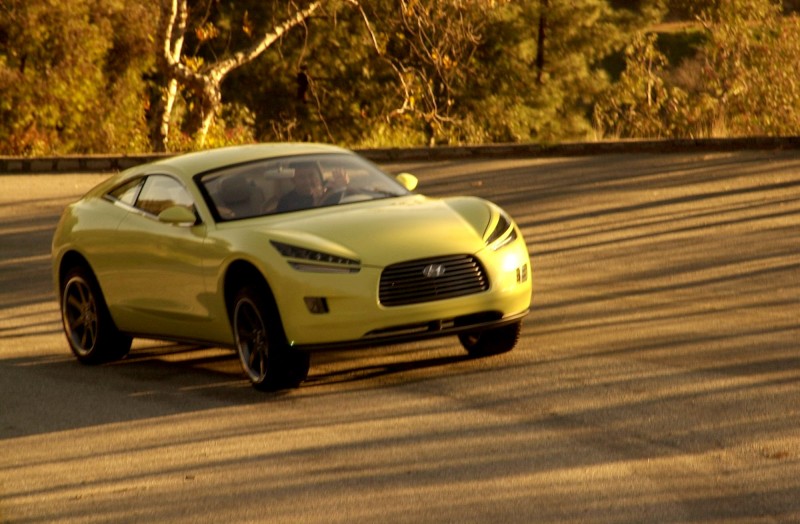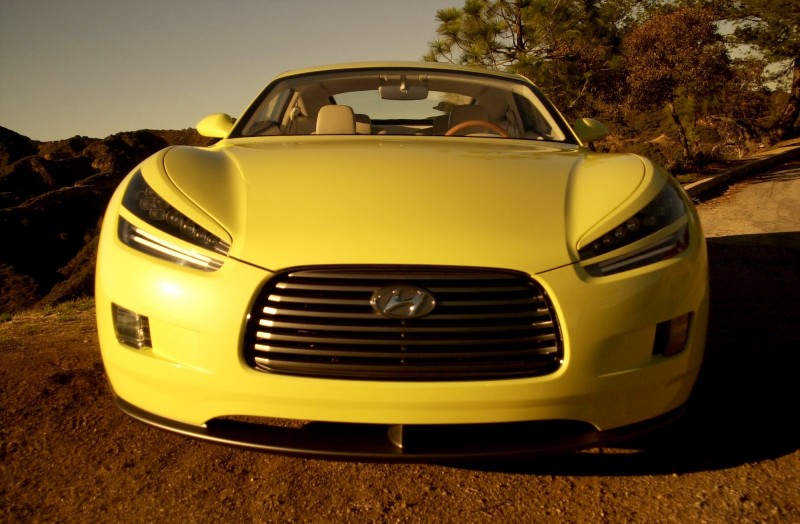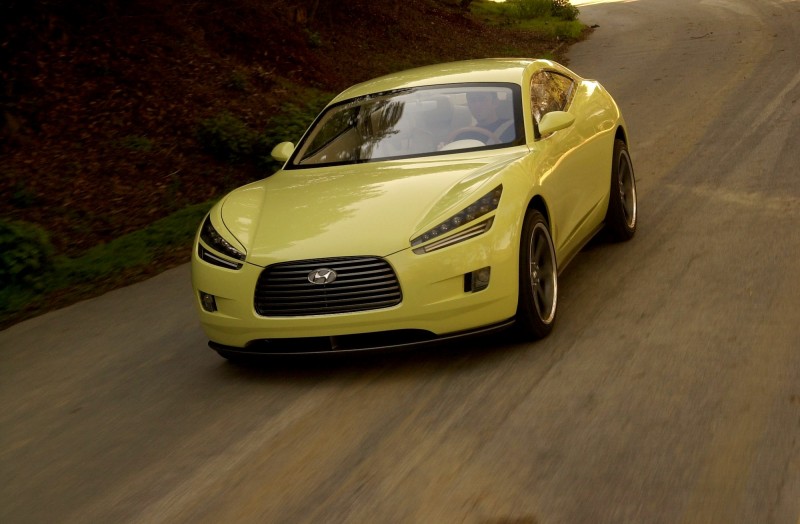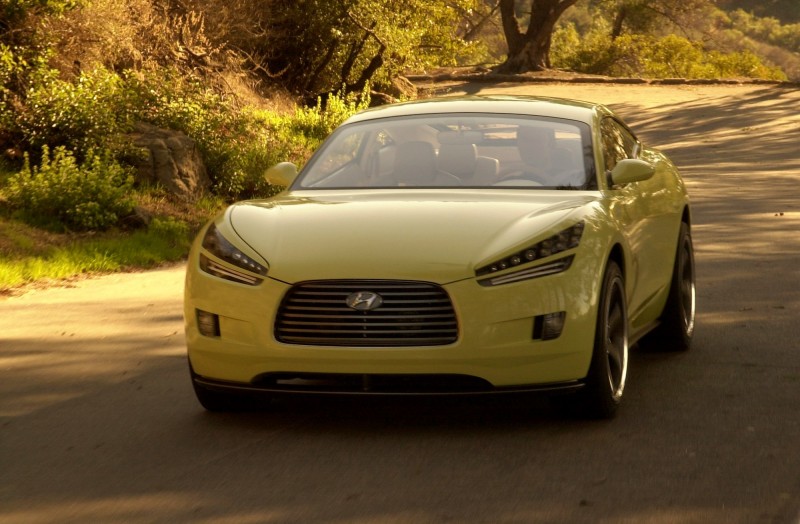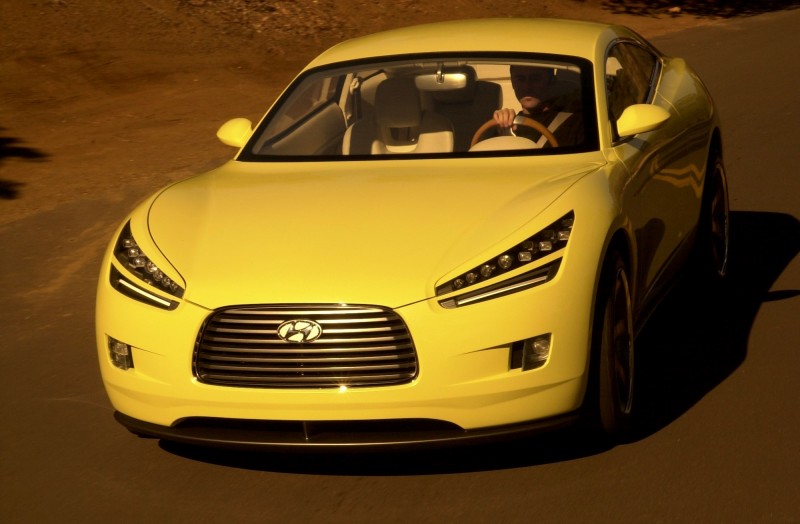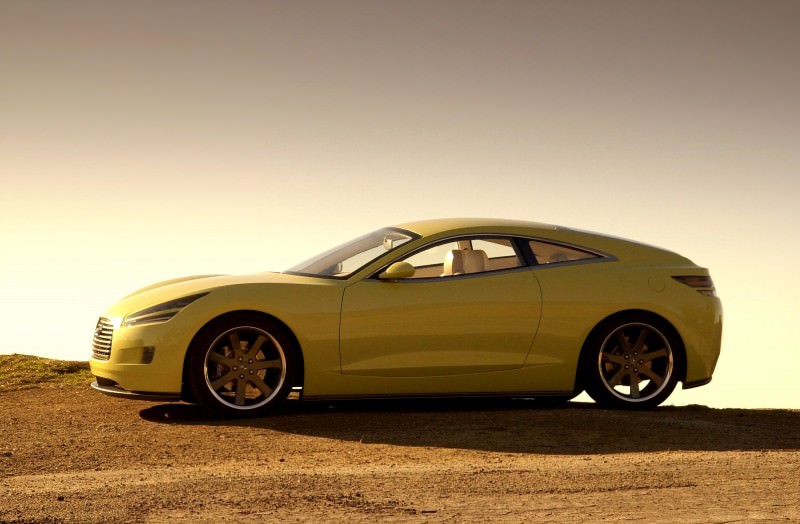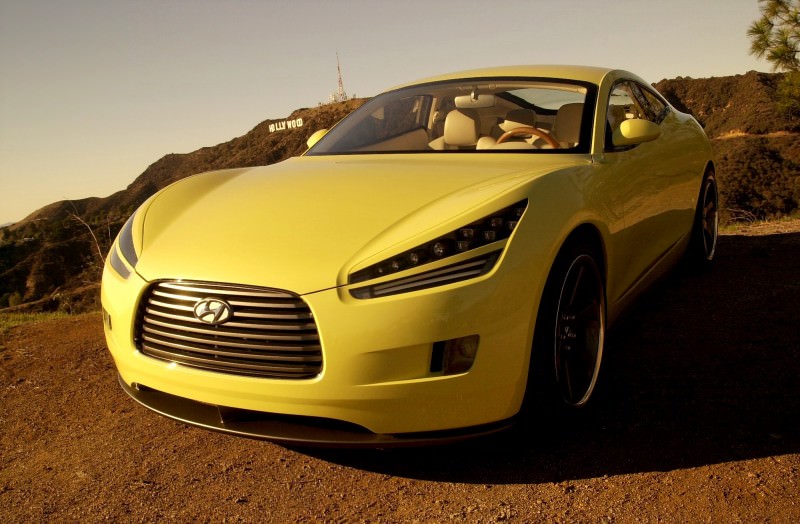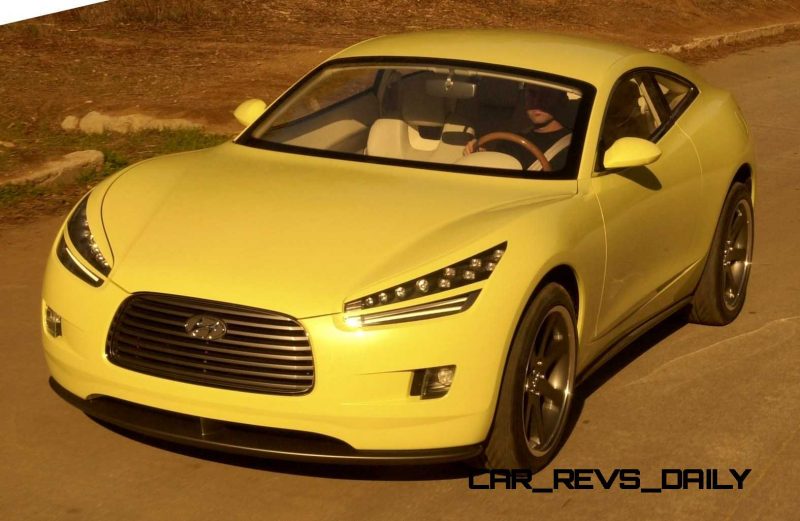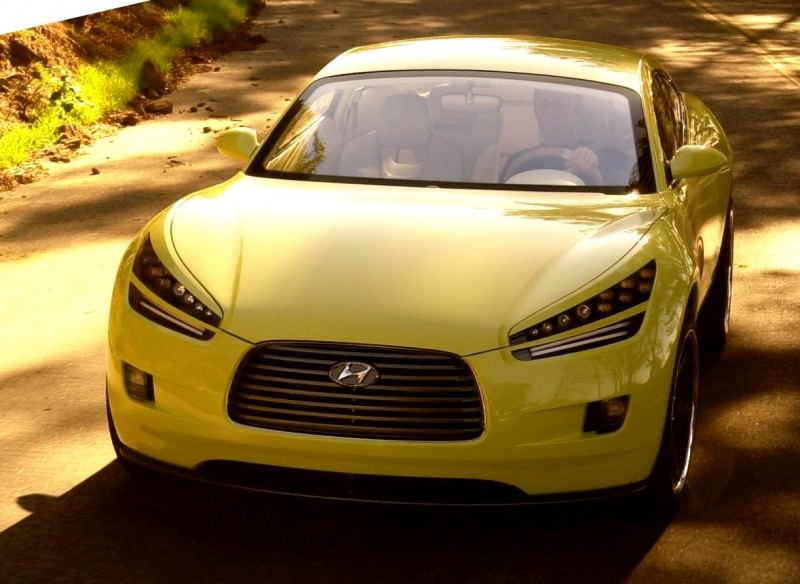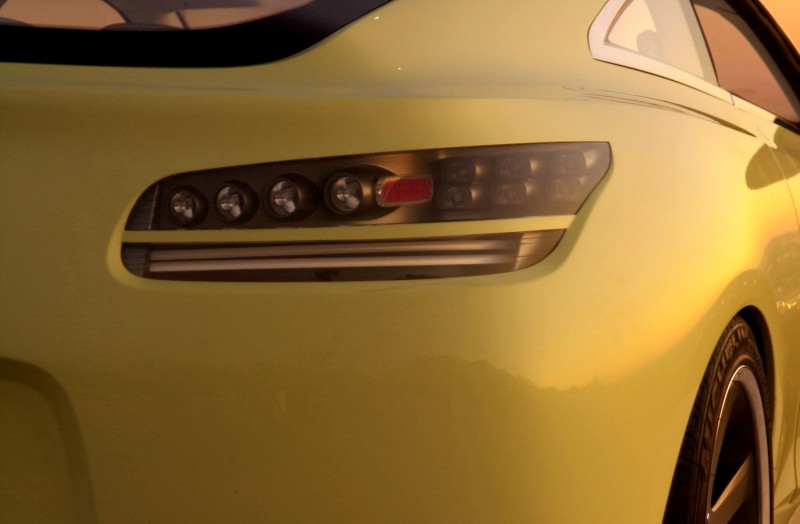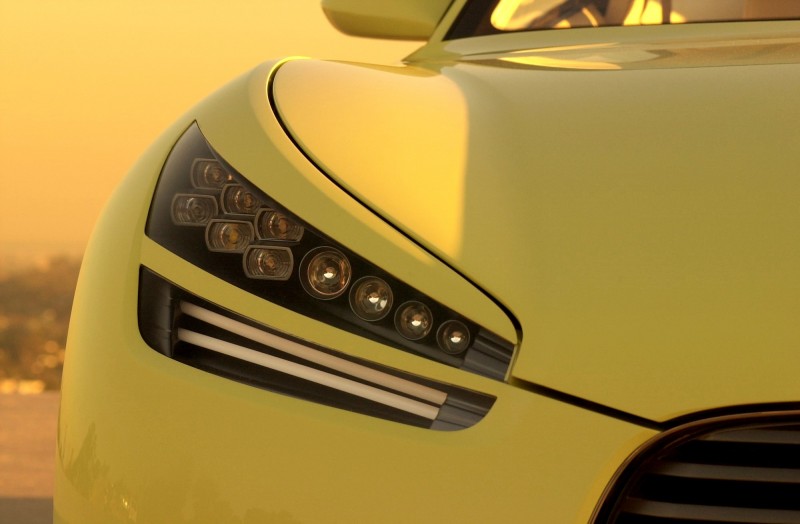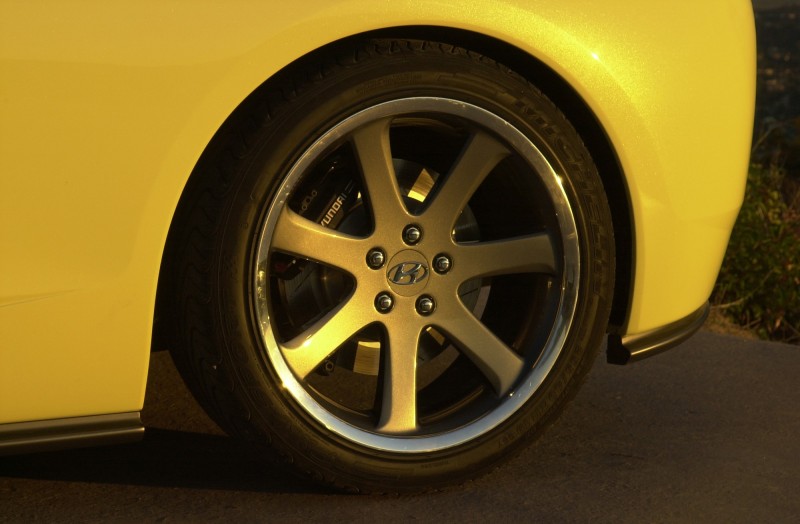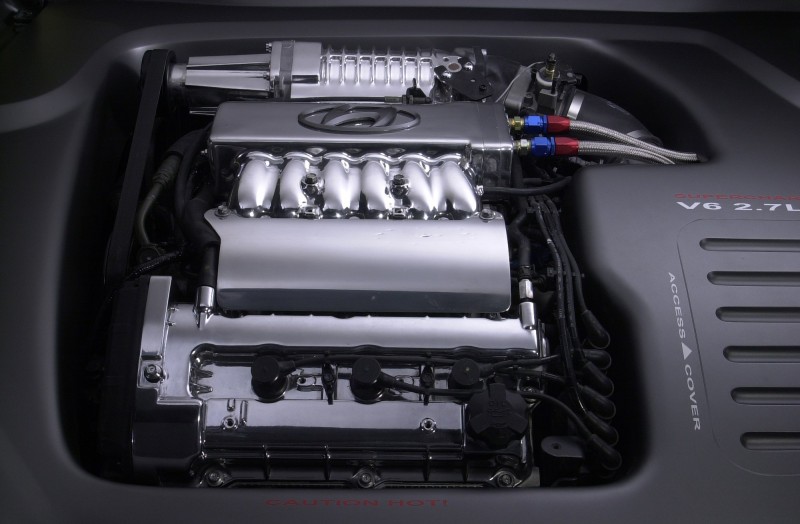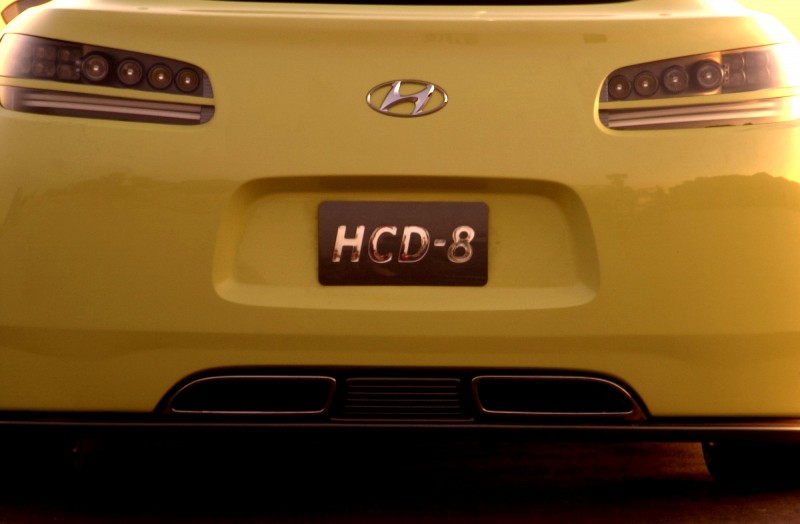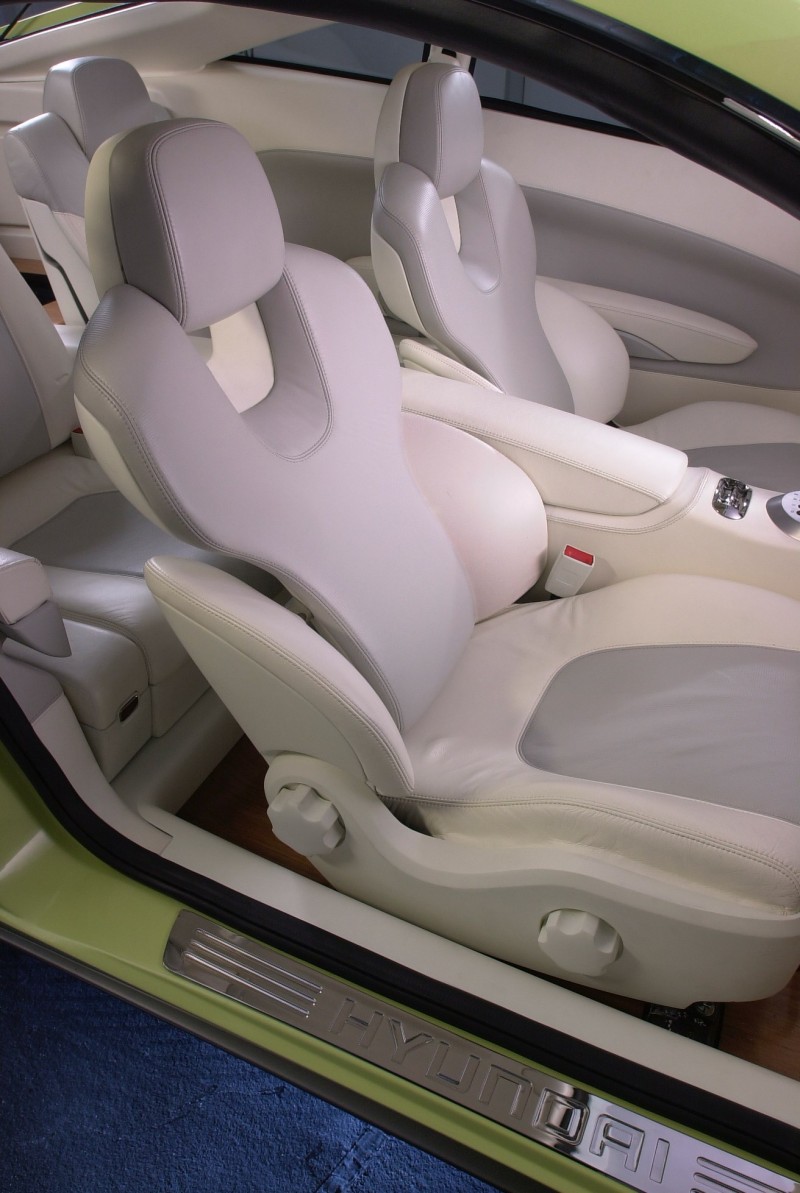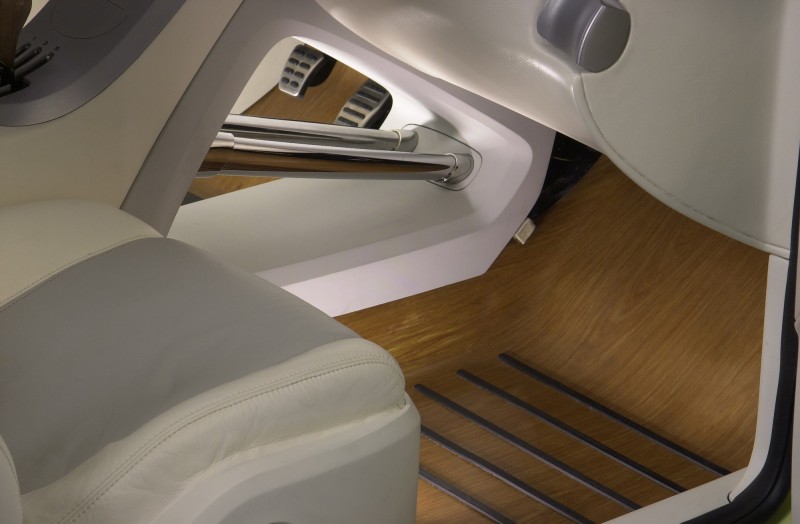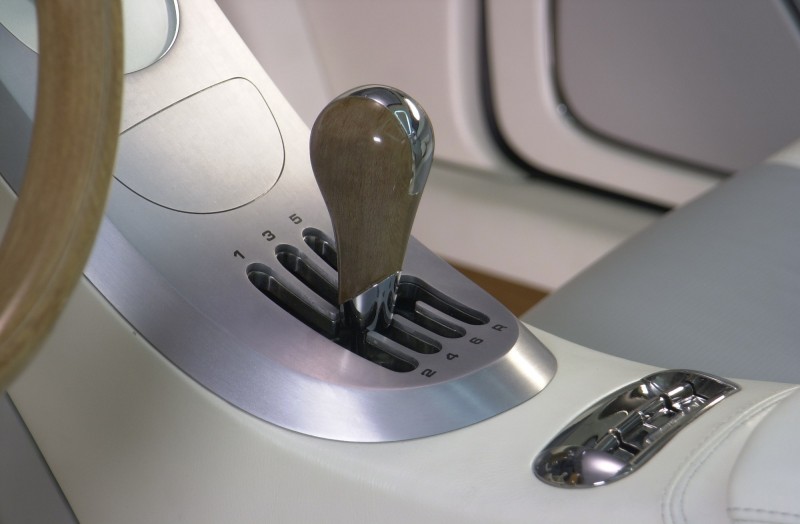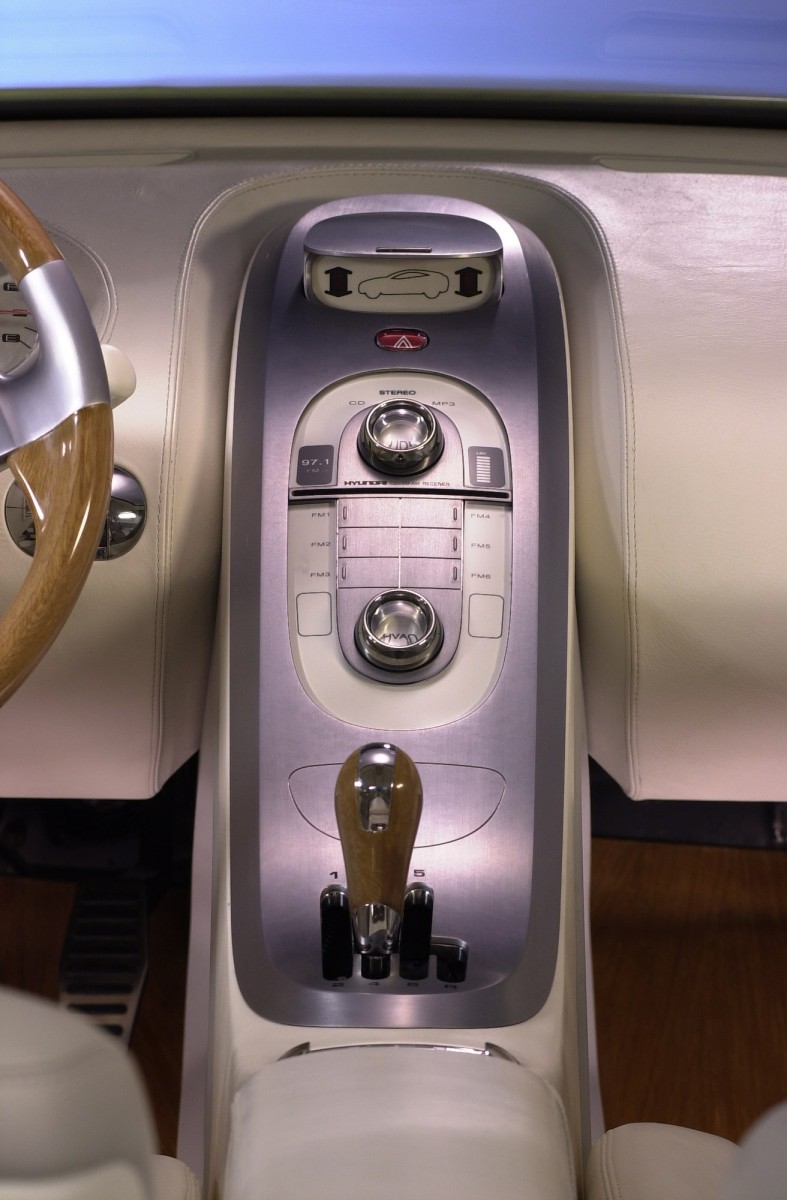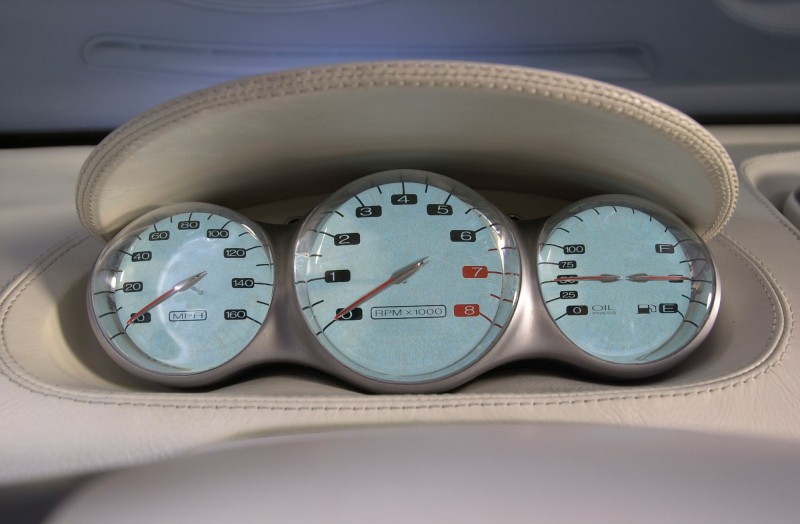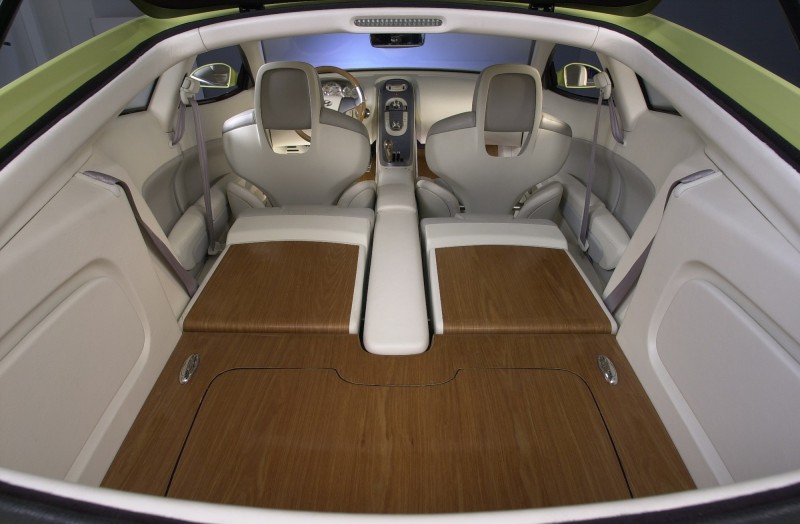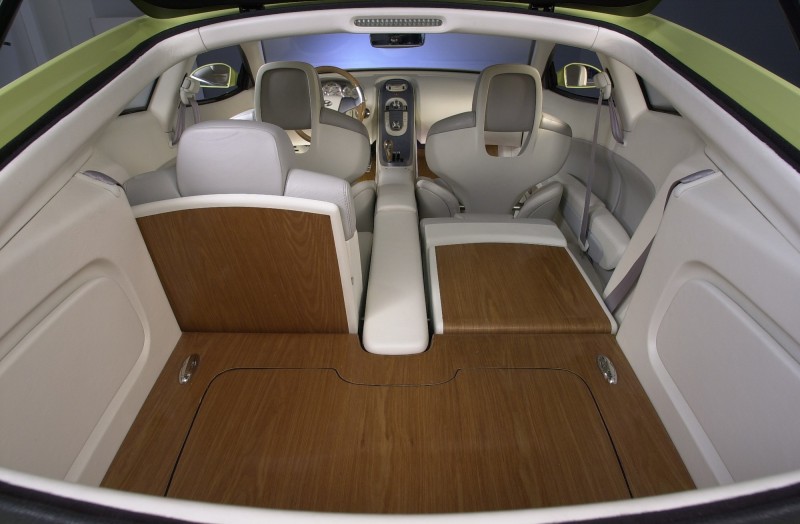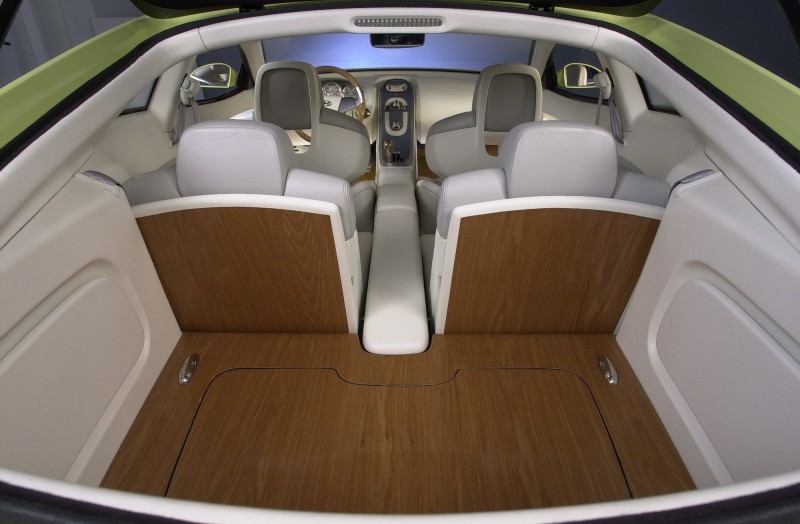 Looking back through the Hyundai concept car archive is pretty shocking. The strides Hyundai has made in overall design and aesthetic appeal in the last decade are simply remarkable.
Looking back through the Hyundai concept car archive is pretty shocking. The strides Hyundai has made in overall design and aesthetic appeal in the last decade are simply remarkable.
Evidence?
This HCD-8 Sports Tourer Concept — a grand GT coupe with luxurious rear-drive proportions, but serious failings in sexiness. (In fact, this coupe is front-drive.)
What the HCD-8 does prove is how much design skill it takes to go from the Hyundai concepts from before this car and onto big hits like the 2011 Sonata and current Elantra. The concepts before this HCD-8 are far, far stranger and less appealing — which shows what a key stepping-stone this coupe was as the first of many projects from Hyundai’s Irvine design center.
2004 Hyundai HCD-8 Sports Tourer Concept
HYUNDAI UNVEILS NEW HCD8
DETROIT, Jan. 5, 2004 – Hyundai today unveiled the newest concept vehicle from the Hyundai Kia Design and Technical Center, the stylish and functional HCD8 sports tourer. The HDC8 is the newest concept vehicle from the Hyundai Kia Design and Technical Center Design studio and is the first concept vehicle to come from Hyundai’s new $30 million Design and Technical Center in Irvine, Calif.
“The Hyundai HCD8 sports tourer was designed to address the sporty car market and still meet the values and needs of today’s consumer,” said Joel Piaskowski, Chief Designer at the Hyundai Kia Design and Technical Center. The design team used marketing research from Hyundai Motor America to design a sporty vehicle that offers more flexibility, more usable space and easier access for passengers and cargo.
“The HCD8 is designed to be a high-performance daily driver,” Piaskowski added. “We also stayed true to core Hyundai asset of making it a good value – the HCD8 offers more value within its market segment,” he added. The HCD8 showcases the professional design capabilities of Hyundai’s state-of-the-art, world-class design studio in Irvine, California.
Style
“The HCD8 is a conceptual design model used to evaluate the design, package and proportion of the next generation sports coupe,” said Chris Zarlenga, Design Manager on the HCD8 project. “The HCD8 has graceful, flowing lines. The surfaces of the vehicle have the volume and shape to retain some classicism of a sports car. We also worked with surfaces and lines that stir the inner emotions of passion, romance and performance. We arranged the graphic components to signal strength, attitude and power,” Zarlenga added.
Highlighting the exciting design elements is the Ballistic Yellow tri-color paint from Nippon. The body color is complemented with anthracite color ground effects trim and road wheels. The exterior trim is polished nickel.
The interior is finished with two-tone Vapor Gray leather seating surfaces accented by wood flooring and wood and aluminum accented steering wheel rim and shift lever knob. The aluminum trim is accented with a nickel finish. “We wanted to contrast the rich, luxurious interior against the Ballistic Yellow exterior,” said Zarlenga.
Architecture
“The HCD8 pushes the architecture and package to the limit,” Zarlenga said. “This provides a new and exciting proportion that can accommodate the needs of the concept,” he explained. “To increase accessibility to the rear seat we lengthened the door apertures and by increasing the height of the rear profile and optimizing storage space, we were also able to add interior utility.”
The designers also stretched the Day Light Opening (DLO — a designer’s term for the side glass) for increased side and rear visibility. They also increased the wheelbase by 100mm (in the dash-to-axle dimension) to achieve classic sports car proportion. Overall, the styling combines soft flowing surfaces with crisp, taut lines.










Performance
The HCD8 with its supercharged 2.7-liter V6 engine, 6-speed manual transaxle and tuned dual exhaust provides performance to match its styling. For real world driving, the driver can adjust the ride height a total of four inches through the air suspension. The vehicle can sit low for high-speed touring or can be raised to handle inclement weather, avoid parking wheel stops, handle a car wash or any other situation where additional ground clearance is needed.
The HCD8 also features state-of-art lighting. The LPI-supplied optics use Light Emitting Diode (LED) technology from Osram Opto Semiconductor to illustrate how future automotive lighting systems will work. The LED lights burn brighter, and are more energy efficient than current lighting systems. In addition, they are expected to last for the life of the vehicle. Unlike incandescent bulbs, LED lighting performance does not deteriorate during its life.
Hyundai Brand Values
“Hyundai is about being bold and different in an automotive market that is not usually willing to take risks. Determination is also a core Hyundai corporate value,” Piaskowski said. “The company has, in just 18 years, become the fourth largest import brand in the U.S.”
“Hyundai’s dramatic growth has been fueled by being bold and different while offering customers greater value at a lower price point. Now we are taking that to a new design level,” he said. “The HCD8 represents what a next-generation sports car from Hyundai could be, It is bold and different. It crosses boundaries within its intended price point and market segment. It offers the consumer an alternative to the expected.”
The HCD8 also illustrates the development of Hyundai’s visual character. “We view the HCD8 as an instrument to design exploration and design development, Zarlenga explained.
“The design team examined Hyundai’s design portfolio for a brand building opportunity. They used the face of the Elantra, the grace of the Sonata and the stance of the Tiburon as inspiration. The high quality interior design of Hyundai’s current production vehicles was also an influence.”
Over the years the face of the Elantra has evolved to be more dramatic, yet still retains the ‘furled brow’ look of the headlamps. The graceful lines and surfaces of the Sonata have been elongated and exploited to promote a sense of beauty and power. With the Tiburon, the stance has been stretched and widened to add to its overall road presence. All of these Hyundai style attributes were catalysts in the design development of the HCD8.
Marketing
“In the U.S., the sporty coupe segment is viewed as a flat or even a declining market” Piaskowski observed. “For this segment to grow, the vehicles must evolve to meet the needs of consumers. Their diverse lifestyles require vehicles with increased accessibility, more functionality and more cargo volume. The HCD8 is designed to appeal to ‘youthful minded professionals’ who want a great looking, high performance sports coupe with added the added functionality they need,” he said.
“We used the findings from HMA Marketing and Product Planning studies and incorporated them into the HCD8 sports tourer. This vehicle could be a first-time purchase or an addition to a fleet of household vehicles. Our consumer target is someone who is youthful minded and passionate about their cars and their driving experience,” he said.

Tom Burkart is the founder and managing editor of Car-Revs-Daily.com, an innovative and rapidly-expanding automotive news magazine.
He holds a Journalism JBA degree from the University of Wisconsin – Madison. Tom currently resides in Charleston, South Carolina with his two amazing dogs, Drake and Tank.
Mr. Burkart is available for all questions and concerns by email Tom(at)car-revs-daily.com.

